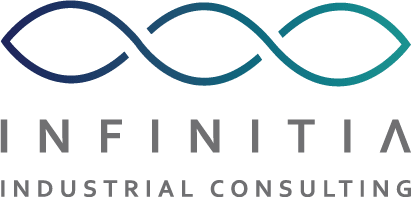Proof of Concept
At INFINITIA Industrial Consulting we know that product development cannot progress without tests that demonstrate the technical and commercial viability of an idea, before moving on to production phases. That is why we rely on proof of concept in product innovation, a crucial process in which the key aspects of a product are evaluated, allowing us to detect potential challenges and optimise the design from the earliest stages.
Did you know that we are experts in concept testing in engineering and technological innovation? We help you make informed decisions about the feasibility of your project. This is how we work in our INFINITIA laboratory.
What is a proof of concept?
When asked what POC or proof of concept means, we tell you that a proof of concept, known by its acronym POC (Proof Of Concept), is a fundamental part of the design process. It is an initial test of an idea, method or product in order to show its potential and feasibility in the real world. A working model or prototype is used to verify that the idea can be realised in practice.
The objective of a proof of concept is to validate assumptions and illustrate that a new product or idea could be successful. In this sense, product development and team members also use proof of concept as a tangible way to identify any unforeseen risks in the production or execution of the product or idea.
In this way, proof of concept is an excellent method to determine the feasibility of a product concept before launching it. At INFINITIA we are experts in proof of concept in technological development. We evaluate and test the basic principles of the product to not only create the final product, but to demonstrate that the idea works, is viable and can meet the established technical and market requirements.

Proof of concept versus prototype
Proof of Concept vs. Minimum Viable Product (MVP)
Although they have some things in common, proof of concept and Minimum Viable Product differ significantly from each other. The MVP refers to a scaled-down version of a new product with only basic features to test it with real customers to see if it works in the market.
The Minimum Viable Product is presented after presenting the prototype and proof of concept. The MVP is developed for the end-user and can therefore take up to months to launch.
Therefore, the proof of concept and the Minimum Viable Product are not only at different stages of the product development process, but also serve completely different purposes.
Proof of Concept Process
The proof-of-concept process for products includes several stages of evaluation and fine-tuning. To do this, the proof-of-concept validation must be worked on in a structured way, analysing every technical and design aspect to ensure that the idea is functional and effective. At INFINITIA we carry out specific tests to assess technical feasibility, identifying potential weaknesses and aspects that need optimisation.
During this phase, we also consider proof-of-concept tests for products that simulate the use and behaviour of the product in real conditions. This evaluation allows us to confirm that the concept is functional, that the design meets market requirements and that the product has a real potential for success.
Rapid Prototyping in Proofs of Concept
Rapid Prototyping in Proof of Concept is an essential tool to visualise and evaluate the product at an early stage of development. At INFINITIA we use advanced prototyping techniques to create functional models for engineering proof-of-concepts and to verify technical and aesthetic aspects of the design. It is important to note that the initial prototype is not the final product, but it is key for usability testing, troubleshooting and fine-tuning before investing in full development.
Rapid prototyping accelerates the development process by facilitating early product review. We identify and resolve design and performance issues early. Ask us about our proof-of-concept work without obligation!
Technical Validation by Proof of Concept
Technical validation by proof of concept is also a guarantee that the performance, durability and safety requirements of a product are met. In this way, specific technical tests are carried out to confirm that the design is feasible and can be manufactured according to quality standards. During this technical validation, we analyse materials, functionality and the product’s ability to withstand real-life conditions.
In addition to the technical validation, we also carry out a feasibility study through a proof of concept, assessing both economic aspects and manufacturing possibilities. This validation phase ensures that the concept is sound and that the final product will be able to meet performance expectations.
Feasibility Assessment with Proof of Concept
Analysing every aspect of the product to verify that it is viable in technical and economic terms is indispensable. At INFINITIA we ensure that every resource invested in the project is aligned with market objectives.
To this end, feasibility assessment with proof of concept allows us to identify potential problems and make adjustments before moving on to more costly development and production phases. This helps us make informed decisions, minimising risks and maximising the product’s potential for success. In our lab, products only move to the next stage of development when they have a solid foundation.
Phases of a proof of concept (POC)
To carry out a proof of concept (POC), it is necessary to follow different steps. From the development of the idea to its realisation and presentation to investors, we can distinguish up to 5 phases of a proof of concept:
- Demonstrate the need for the product: When presenting the proof of concept, the need for the product should be established by mentioning who the target audience is and what are their pain points or situations that customers may encounter.
In this regard, it will be necessary to interview a sample of customers or panellists to understand and verify their needs and those of the product. - Ideation of solutions: Based on the responses of the sample group, the product development team can start brainstorming to find appropriate solutions to the customers’ pain points. In doing so, it should be kept in mind that they should also be feasible and within the capabilities of the project.
- Evaluation of ideas: The team must then evaluate each of the proposed solutions in terms of likely costs, timescales, technologies needed, operational capacity required, competence, resources and other factors. So that they are able to narrow down the list of ideas to the most feasible and finalise their product proposal.
- Design a proof of concept: With the comments and feedback from potential users, create a proof of concept of the product that addresses the points of conflict and offers feasible solutions. Similarly, it is interesting to have customers review the proof of concept and provide feedback so that the product idea can be refined based on the comments. Using feedback from your potential customers is essential to refine the proof of concept (POC).
- Presentation of the proof of concept: Among other things, the problems solved by the product, the features addressed by these solutions and the technologies integrated in its development should be clarified to demonstrate the feasibility of the project idea. Similarly, it is necessary to detail the product development components, including clearly defined success criteria, functionalities, features and benefits of the product. It is also necessary to include details such as schedule, cost, success criteria and resources required. The finalised proof of concept will be presented to stakeholders and investors for sign-off, certification of feasibility and eventual approval of the product for development.
Discover with INFINITIA the advantages of a proof of concept in product development.
Learn about the advantages of taking this product proof-of-concept process forward with us. We ensure that each concept is viable and optimised before moving on to the production phase. We ensure the success of your product from the early stages of development:
- Early validation of product feasibility: Our proof-of-concept process allows us to identify and solve problems at the earliest stages, ensuring that the product is viable and functional.
- Risk reduction and resource optimisation: Proof of concept helps minimise risk, allowing our clients to make informed decisions and optimise their project investments.
- Comprehensive assessment of functionality and technical feasibility: With our technical testing and rapid prototyping, we ensure that every aspect of the design is aligned with market objectives and user expectations.

Contact INFINITIA
At INFINITIA Industrial Consulting we are experts in proof of concept for innovative products. Write now to our team of specialists, we are ready to help you with your project!
